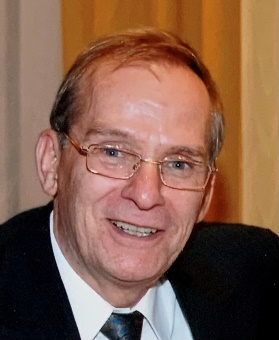Technologist Biography
As a technologist, Williams first worked at System Development Corp (SDC), where he served as a BSD UNIX system programmer. He contributed to a variety of early UNIX / Internet projects including Pearl with Larry Wall, and Warp, an early computer game to run on CRTs based on Star Trek. As CTO at Sonus Corp, he authored the program SuperScore, one of the first computer editing and printing programs for music. He and Cleo Huggins developed the Adobe Sonata Font. Williams also authored articles for the IEICE, Music Technology, Electronic Music Educator, and Klavier.
Williams was an early employee at Sun Microsystems in the kernel team and the OBP (Open Boot) team, and implemented the first IOMMU kernel software for DVMA (Direct Virtual Memory Access). He served as the Chief Technical Architect for Fujitsu Software, HAL computers, and represented Fujitsu in the SPARC 10 architecture committee [1] and the SPARC International certification organization. As a Senior IEEEE member, Williams served as the Vice Chair of the IEEE 802.21 working group, secretary for the IEEE 1275 Open Firmware working group, and member of the IEEE 1754 Open Microprocessor working group. He was awarded the title of Leading Scientist while working at Nokia. He represented Nokia at the Wi-Fi Alliance, IEEE (including 802.11i,s and 802.21) and 3GPP. Williams is co-author of IETF RFC 5412 "Lightweight Access Point Protocol", RFC 6520 "Transport Layer Security (TLS) and Datagram Transport Layer Security (DTLS) Heartbeat Extension" and Draft Mobile DTLS
Before the iPhone was released, Williams proposed "the computer phone" to the Nokia Technology Board. He led Nokia teams in negotiations with Google to create the first smartphone. Nokia withdrew from the negotiations. Google instead purchased several companies to create Android and the Pixel, while Apple went on to release the iPhone. Nokia did not create a smartphone, and went on to be purchased by Microsoft. Williams invented the "Interactive Broadcast Television [2] " Williams holds patents in a variety of areas including Wi-Fi, 3GPP, network security, clustering, authentication and secure search.

Ethernet is a family of wired computer networking technologies commonly used in local area networks (LAN), metropolitan area networks (MAN) and wide area networks (WAN). It was commercially introduced in 1980 and first standardized in 1983 as IEEE 802.3. Ethernet has since been refined to support higher bit rates, a greater number of nodes, and longer link distances, but retains much backward compatibility. Over time, Ethernet has largely replaced competing wired LAN technologies such as Token Ring, FDDI and ARCNET.

Wi-Fi is a family of wireless network protocols based on the IEEE 802.11 family of standards, which are commonly used for local area networking of devices and Internet access, allowing nearby digital devices to exchange data by radio waves. These are the most widely used computer networks, used globally in home and small office networks to link devices and to provide Internet access with wireless routers and wireless access points in public places such as coffee shops, hotels, libraries, and airports.

John Towner Williams is an American composer and conductor. In a career that has spanned seven decades, he has composed some of the most popular, recognizable, and critically acclaimed film scores in cinema history. He has a distinct sound that mixes romanticism, impressionism and atonal music with complex orchestration. He is best known for his collaborations with Steven Spielberg and George Lucas and has received numerous accolades including 26 Grammy Awards, five Academy Awards, seven BAFTA Awards, three Emmy Awards and four Golden Globe Awards. With 54 Academy Award nominations, he is the second-most nominated person, after Walt Disney, and is the oldest Oscar nominee in any category, at 92 years old.

Mátyás György Seiber was a Hungarian-born British composer who lived and worked in the United Kingdom from 1935 onwards. His work linked many diverse musical influences, from the Hungarian tradition of Bartók and Kodály, to Schoenberg and serial music, to jazz, folk song, and lighter music.
"Autumn Leaves" is the English-language version of the French song "Les Feuilles mortes" composed by Joseph Kosma in 1945. The original lyrics were written by Jacques Prévert in French, and the English lyrics were by Johnny Mercer. An instrumental recording by pianist Roger Williams was a number one best-seller in the US Billboard charts of 1955.
Meriwether Lewis Spratlan Jr. was an American music academic and composer of contemporary classical music.

Wi-Fi calling, also called VoWiFi, refers to mobile phone voice calls and data that are made over IP networks using Wi-Fi, instead of the cell towers provided by cellular networks. Using this feature, compatible handsets are able to route regular cellular calls through a wireless LAN (Wi-Fi) network with broadband Internet, while seamlessly change connections between the two where necessary. This feature makes use of the Generic Access Network (GAN) protocol, also known as Unlicensed Mobile Access (UMA).
Mobile VoIP or simply mVoIP is an extension of mobility to a voice over IP network. Two types of communication are generally supported: cordless telephones using DECT or PCS protocols for short range or campus communications where all base stations are linked into the same LAN, and wider area communications using 3G or 4G protocols.
Ethernet in the first mile (EFM) refers to using one of the Ethernet family of computer network technologies between a telecommunications company and a customer's premises. From the customer's point of view, it is their first mile, although from the access network's point of view it is known as the last mile.

In radio, multiple-input and multiple-output (MIMO) is a method for multiplying the capacity of a radio link using multiple transmission and receiving antennas to exploit multipath propagation. MIMO has become an essential element of wireless communication standards including IEEE 802.11n, IEEE 802.11ac, HSPA+ (3G), WiMAX, and Long Term Evolution (LTE). More recently, MIMO has been applied to power-line communication for three-wire installations as part of the ITU G.hn standard and of the HomePlug AV2 specification.
In telecommunications, long-term evolution (LTE) is a standard for wireless broadband communication for mobile devices and data terminals, based on the GSM/EDGE and UMTS/HSPA standards. It improves on those standards' capacity and speed by using a different radio interface and core network improvements. LTE is the upgrade path for carriers with both GSM/UMTS networks and CDMA2000 networks. Because LTE frequencies and bands differ from country to country, only multi-band phones can use LTE in all countries where it is supported.
John Serry Jr. is an American jazz pianist and composer, as well as a composer of contemporary classical music works that feature percussion, on which he also doubles. He is a son of the accordionist and composer John Serry. His debut solo album was 'Exhibition', for which he received a Grammy Nomination for his composition, 'Sabotage'.

In computer networking, Energy-Efficient Ethernet (EEE) is a set of enhancements to twisted-pair, twinaxial, backplane, and optical fiber Ethernet physical-layer variants that reduce power consumption during periods of low data activity. The intention is to reduce power consumption by at least half, while retaining full compatibility with existing equipment.

The Nokia N8 is a touchscreen-based smartphone developed by Nokia. Announced on 27 April 2010, the Nokia N8 was the first device to run on the Symbian^3 mobile operating system and it was the company's flagship device for the year. It was released on 30 September 2010 at the Nokia Online Store before being released in markets around the world on 1 October 2010. There were two versions made, the N8 and the N8-00. The N8 was made for Vodafone and locked to its networks, and the N8-00 was made by Microsoft and open network.
IEEE 802.11ac-2013 or 802.11ac is a wireless networking standard in the IEEE 802.11 set of protocols, providing high-throughput wireless local area networks (WLANs) on the 5 GHz band. The standard has been retroactively labelled as Wi-Fi 5 by Wi-Fi Alliance.

Bernhard H. Walke is a pioneer of mobile Internet access and professor emeritus at RWTH Aachen University in Germany. He is a driver of wireless and mobile 2G to 5G cellular radio networks technologies. In 1985, he proposed a local cellular radio network comprising technologies in use today in 2G, 4G and discussed for 5G systems. For example, self-organization of a radio mesh network, integration of circuit- and packet switching, de-centralized radio resource control, TDMA/spread spectrum data transmission, antenna beam steering, spatial beam multiplexing, interference coordination, S-Aloha based multiple access and demand assigned traffic channels, mobile broadband transmission using mm-waves, and multi-hop communication.
Per-user unitary rate control (PU2RC) is a multi-user MIMO (multiple-input and multiple-output) scheme. PU2RC uses both transmission pre-coding and multi-user scheduling. By doing that, the network capacity is further enhanced than the capacity of the single-user MIMO scheme.
Kaibin Huang is a professor in the EEE department at The University of Hong Kong and a leading researcher in the area of Wirelessly Powered Communications (WPC).
Sean Chen is an American pianist.








